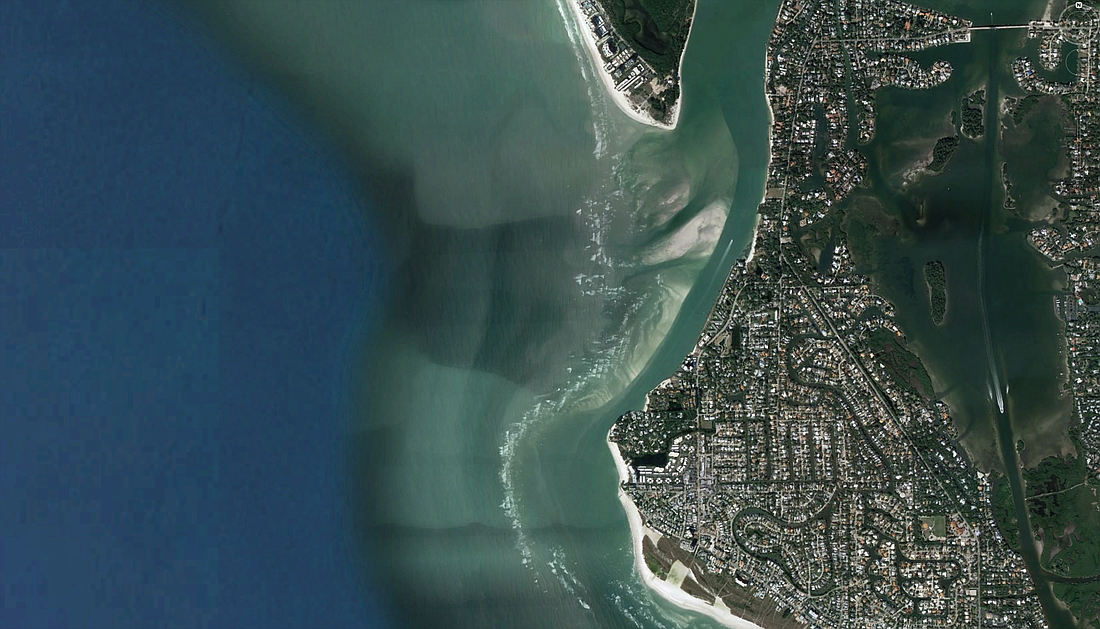- April 18, 2024
-
-
Loading

Loading

With just a few days remaining in 2016, Lido Key residents got some good news to take into the new year.
On Dec. 22, the Florida Department of Environmental Protection issued an important update on a project that has divided Sarasota residents for more than three years. The DEP announced its intent to issue a permit for the Lido shoreline renourishment project that would use sand dredged from Big Pass.
For Lido residents — and the U.S. Army Corps of Engineers and city of Sarasota, the two groups behind the proposal — the DEP’s announcement was a confirmation of a deeply held belief. Lido Key needs sand to reinforce its critically eroded shoreline, and Big Pass was the best place to get that sand.
“We don’t want to turn it into a war with these people, but we’ve got to protect our assets out there.” — Carl Shoffstall
For Siesta Key residents and other opponents of the project, the news was a setback. Groups like Save our Siesta Sand 2 and the Siesta Key Association have repeatedly questioned the impact the Big Pass dredge would have on the Siesta shoreline, and they say they haven’t gotten satisfactory answers.
The DEP downplays those concerns in a document announcing the intent to issue a permit. The state agency said the Army Corps of Engineers application provides sufficient engineering data to demonstrate the project minimizes potential adverse impacts to Siesta Key.
In the wake of the DEP announcement, neither side is content to sit back. Peter van Roekens, the chairman of Save our Siesta Sand 2, is in the process of appealing the DEP decision. Sarasota County and the Siesta Key Association have gotten extensions from the state to file their own appeals.
Even if those challenges prove unsuccessful, there are still several hurdles the project has left to clear that will offer more opportunities for protest.
“We’re certainly in this for the long haul,” van Roekens said. “It’s not something that will go away.”
“We believe we’ll prevail. We’re very positive that this will come out well for us.” — Peter van Roekens
Catherine Luckner, a Siesta Key Association board member, is taking a long-term view regarding the project. Although she believed there was sufficient evidence for the DEP to reject the application, she’s hopeful that evidence will make an impact as the project continues to advance through the approval process.
“That’s what I’m holding onto right now,” Luckner said. “They have to do an environmental assessment that’s proper, get funding, finalize construction plans, get a permit to proceed.”
Beyond the seemingly inevitable legal challenges to the project, funding may be the biggest challenge the proposed dredging faces. City engineer Alex DavisShaw said work on the project could begin next winter — but only if about $18 million in federal funding can be secured.
As for the concerns of Siesta residents, DavisShaw encouraged anyone with questions to speak up so representatives from the city or Army Corps can provide the information they’ve gathered in support of the project. City representatives have said the coastal system takes sand from Lido Key and transports it to Big Pass — so in essence, the project would just take back sand that was previously Lido’s.
“I think the more people understand what’s going on and why it does what it does, I think that will help people understand where the plans are coming from,” DavisShaw said.
“We always want to have a backup plan and backup plans for our backup plans. If anything unexpected happens, we’ll have options to make changes.” — Alex DavisShaw
She added that the city is working to create a more robust long-term monitoring system for the region’s coastlines. The city plans to reach out to the county and potentially Longboat Key to collaborate on that effort.
“The more information we get, the more we can see what’s going on now and into the future,” she said.
Lido Key residents, meanwhile, are evaluating their options for countering the legal challenge Siesta residents plan to mount. Lido Key Residents Association President Carl Shoffstall continues to stress the urgent need for the proposal to move forward.
“We don’t want to get into a war with Siesta,” Shoffstall said. “But we’ve got to protect our assets out there.”